Nesactium is an archeological park. A place where once stood the capital of the people called Histri, and then after the Roman conquest in 177 BC, a fortified Roman town rebuilt upon the original Histrian pattern with some new content brought by the conquerors. The place was abandoned in the 6th century and then rediscovered by archeologists in the first years of the 20th century.
On the 16th of September last year, I spent a couple of hours exploring insects, spiders, and various small details under the oak trees on the edge of what remains of the ancient city. Enthralled with what I found on that occasion, I returned the next day, and then on the 18th of September, you could see me sniffing around the same place again.
In today's post, I'll show you what I photographed back then in September of 2022 under the oaks of Nesactium. Have a good viewing.
This is the Phlegra bresnieri, a lovely little spider from the Salticidae family.
The spider was jumping around and I spent a couple of minutes following it through the macro lens. At one point, the jumping spider entered one of the many acorn caps accumulated under the tree ...
... and assumed the ideal pose for a portrait. In the following photograph ...
... I got a bit closer.
Here you can see the tiny spider in the wider macro-scenery made of acorn caps.
A couple of minutes later, Phlegra bresnieri continued jumping around the pile of acorn caps and other fragments that have fallen from the tree and I continued searching for something else to photograph.
Here you can see a grasshopper.
This is the Oedipoda caerulescens, a well-camouflaged grasshopper from the Acrididae family. This one is brown, but a grasshopper from that same species can have a slightly different appearance.
In this case, for example, the colors are different ...
... but the camouflage still works well enough.
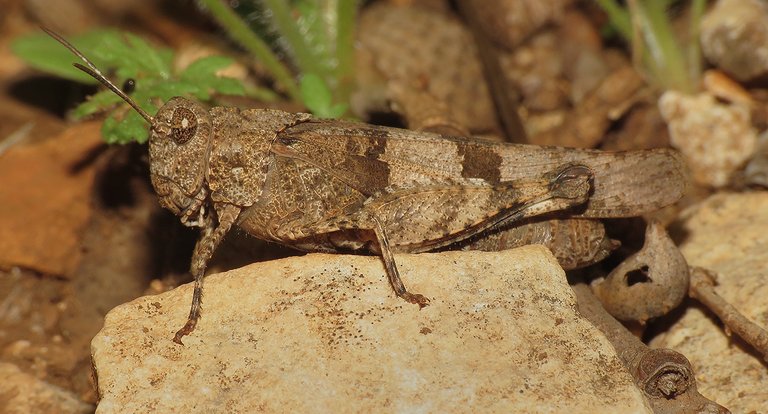
Here you can see an Oedipoda caerulescens grasshopper in a slightly different version of completely brown.
This one is also brown but has a distinctive yellow detail on the edge of the pronotum, a detail absent in other grasshoppers of the same kind I encountered that day. In the following photograph ...
... you can take a break from the macro-view by staring at the tree under which the grasshoppers and the jumping spider were photographed for at least ten seconds. The tree in question is a Quercus pubescens, commonly known as the Downy oak.
Here, in this set of four similar photographs, you can take a look at the textures & patterns created by twigs and acorns that have fallen on the ground.
The next day, under the same tree, I found something that looks like a piece of viscera that belonged to some small mammal caught by a predator.
The thing was laying on the layer of acorns and twigs.
It wasn't a pleasant site for me, but some insects are attracted by this kind of stuff ...
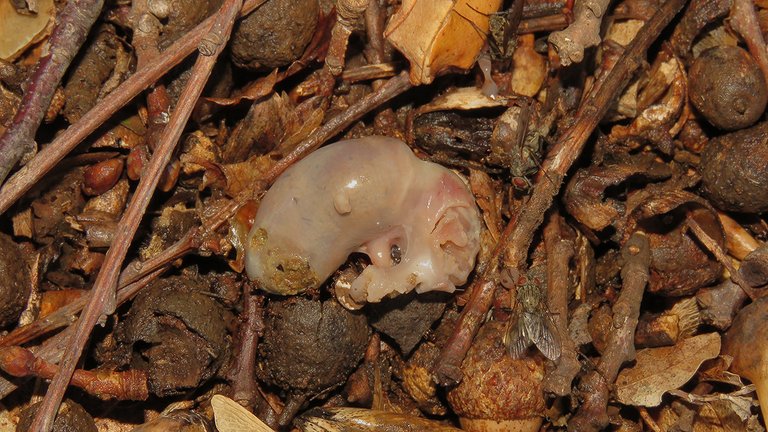
... so I came closer ...

... in the hope to catch some interesting scavenger activities. In this and the following photograph ...

... you can see a group of ants collecting the food.
In this tryptich, one of those ants is cleaning its feet and antennae.
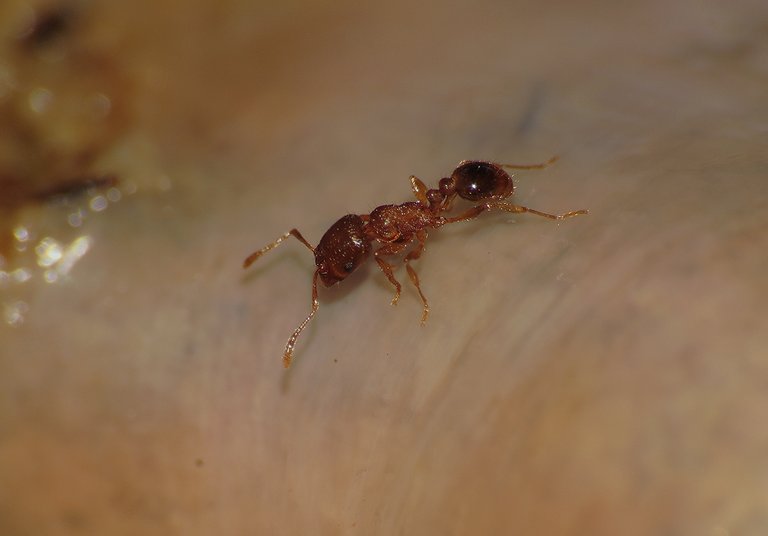
When it comes to the name of the species, I can't tell you that. But I'm pretty sure that the genus is Tetramorium and the family - Formicidae.
These ants are pretty small.
Comparing them to the small and medium-sized flies that soon came to feed on that piece of entrails can give an idea about their size. In the following photograph ...
... you'll find everything you need to do that comparison.
Here you can take a better, more up-close look at the smaller of the two flies shown in the previous photograph. The name of the species ...
... is Adia cinerella. The family - Anthomyiidae.

The bigger fly ...
... belongs to the Muscidae family ...
... to the genus Helina of that family which includes the ordinary houseflies.
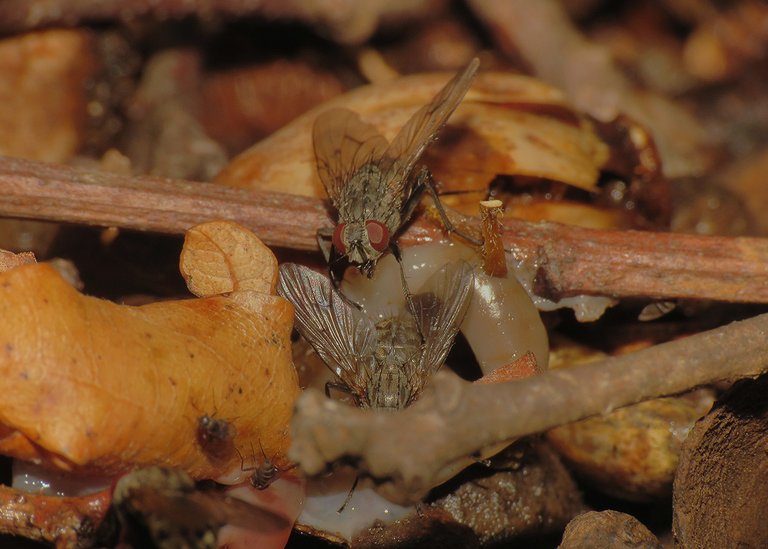
I can't tell you what species exactly is this ...
... but if I would have to guess, I would say that is the Helina allotalla.
The flies and the ants weren't the only scavengers that have found this nutrient piece of viscera.
A wasp was also there.
This is the Vespula germanica, a paper wasp from the Vespidae family.
The ants were taking very small chunks. The flies were feeding only on goo and liquid. The wasp, on the other hand, was cutting much bigger pieces with its mandibles.
In this, the previous, and the following photograph ...
... you can follow the process of cutting and removing a chunk.
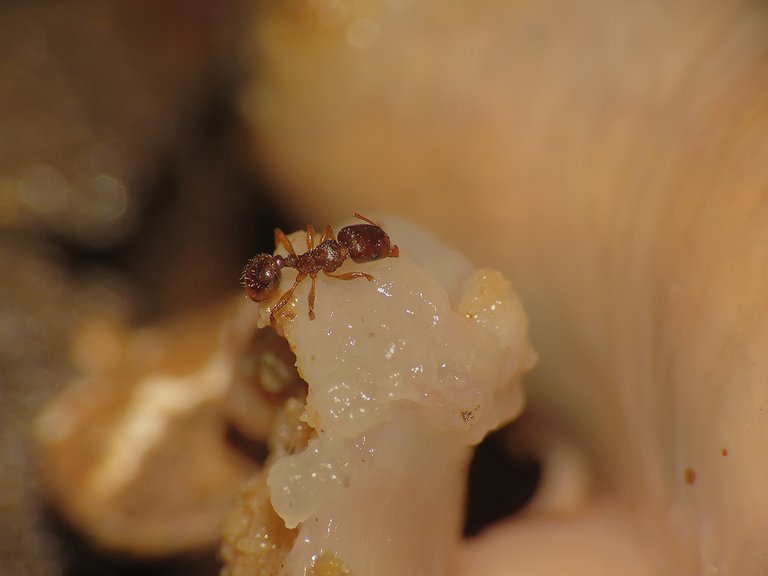
And now, before leaving the scavengers...
... you can take one last look at the Adia cinerella fly. In the following photograph ...
... you can take another short break from the macro view and slimy, partially eaten body parts by taking a look at the layer of acorns & twigs from a different angle.

Here you can see a beetle that I photographed on the 18th of September.
I'm still unable to identify the species.
The family is probably Tenebrionidae.
I mean, I'm pretty sure about the family.
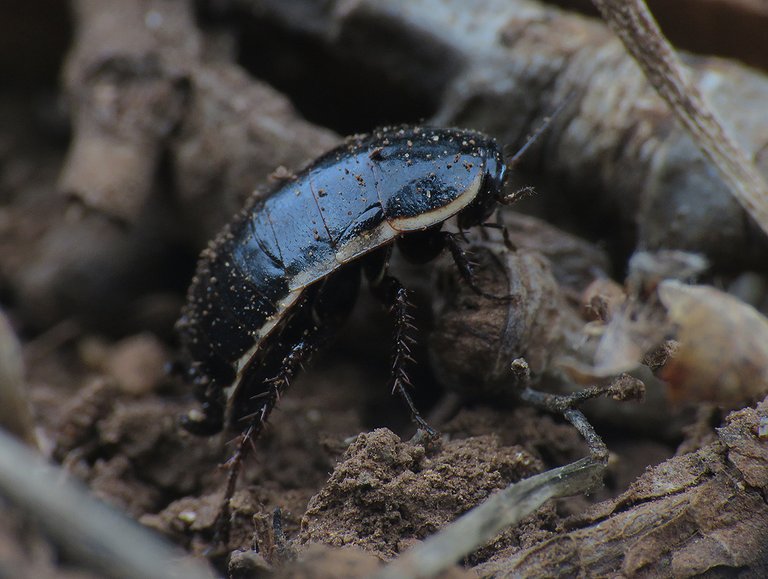
This small cockroach belongs to the Ectobiidae family. The name of the species is Loboptera decipiens.

I came across some mushrooms on that day, the 18th of September.
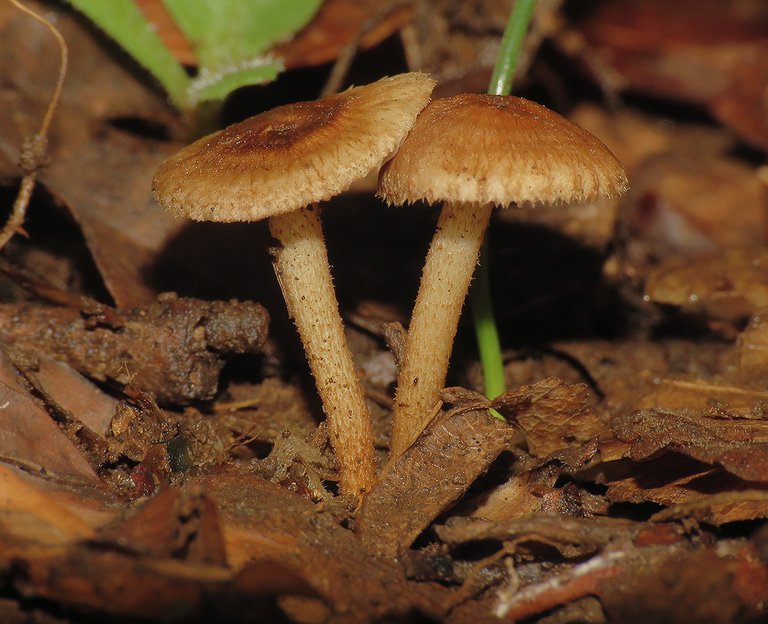
Crinipellis zonata is the name of this species from the Marasmiaceae.
The pale shape, blurred in the background of this shot in which the focus is on the mushroom, is an insect. In the following photograph ...
... the same insect is clear and sharp. The focus is on the Metcalfa pruinosa, a planthopper from the Flatidae family.
This slimy green thing that looks like some kind of algae ...
... is the Nostoc commune ...
... a colonial species of cyanobacterium. The slimy formations shown in these photographs, taken on the 16th of September ...
... are made of bacteria that can't be seen with the naked eye.
Here you can take yet another Oedipoda caerulescens grasshopper.
This one was resting on a patch of terrain covered with cyanobacteria.
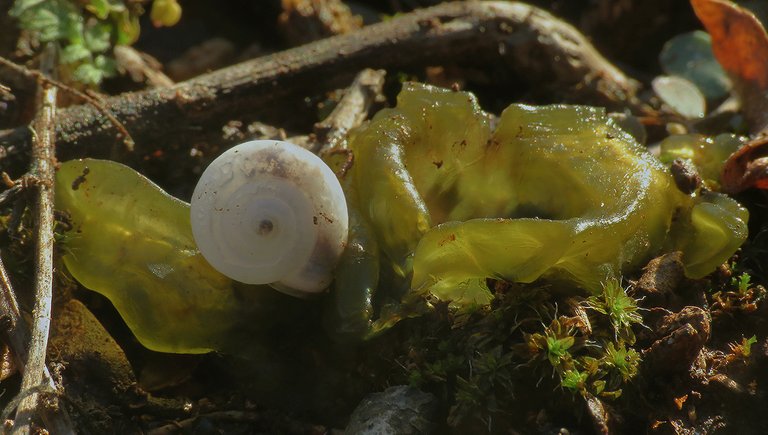
In the same area, I also found this small, photogenic spiral shell.
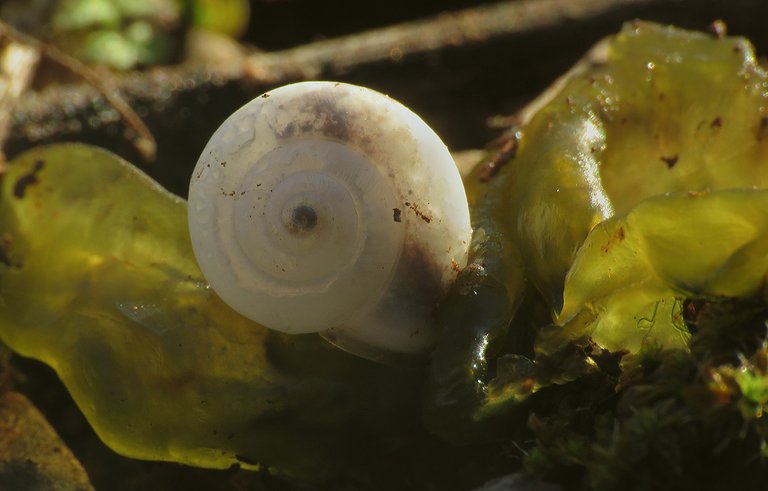
This is an empty shell of Theba pisana, a snail from the Helicidae family.
Here you can see the Nostoc commune next to a young herbaceous plant that has spread its stems and leaves horizontally, across the ground.
The well-camouflaged, almost invisible spider shown in this and the following five photographs ...
... is the Pardosa amentata ...
... a species from the Lycosidae family.
Spiders from that family are commonly known as wolf spiders.
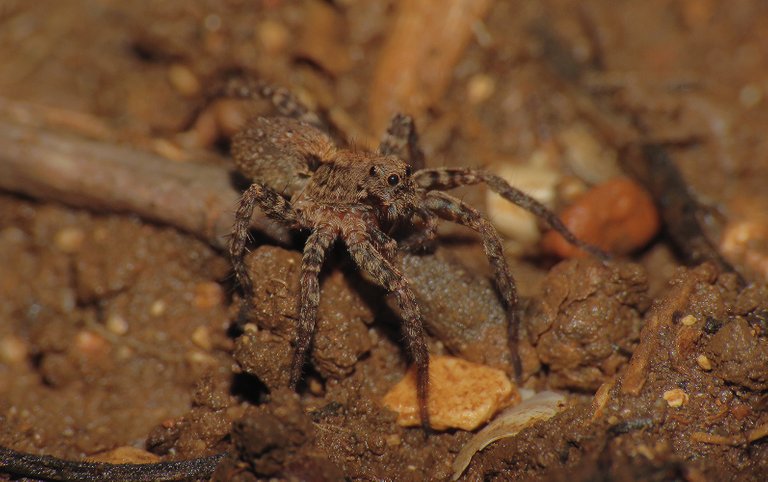
Like most other wolf spiders, Pardosa amentata doesn't spin webs and hunts the prey by chasing it over short distances.
Good camouflage not only helps in hunting ...
... but also keeps the fairly small spider out of the sight of bigger predators that would gladly make a meal out of it.
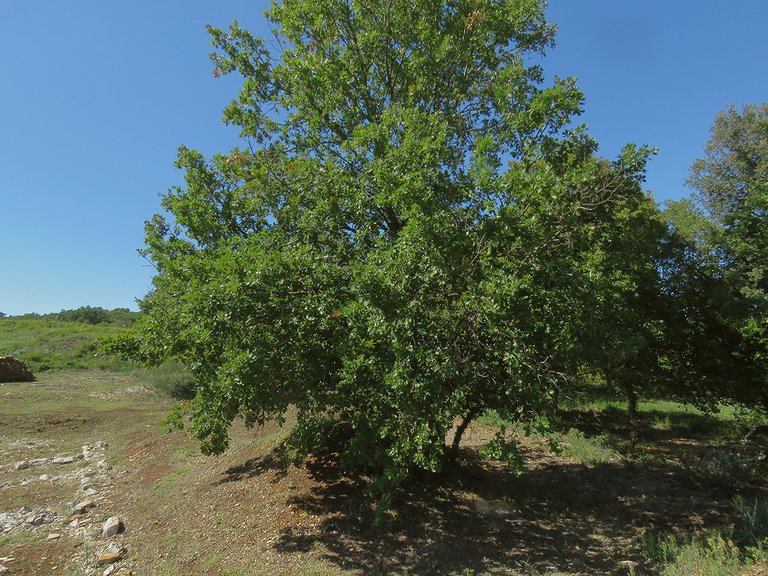
The 18th of September was a bright and sunny day.
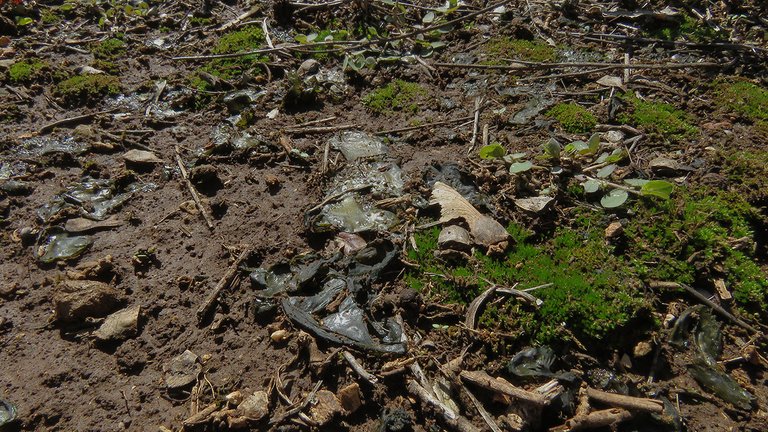
The weather wasn't favorable to colonies of cyanobacteria.

Nostoc commune was getting dry and thin, not very photogenic ...
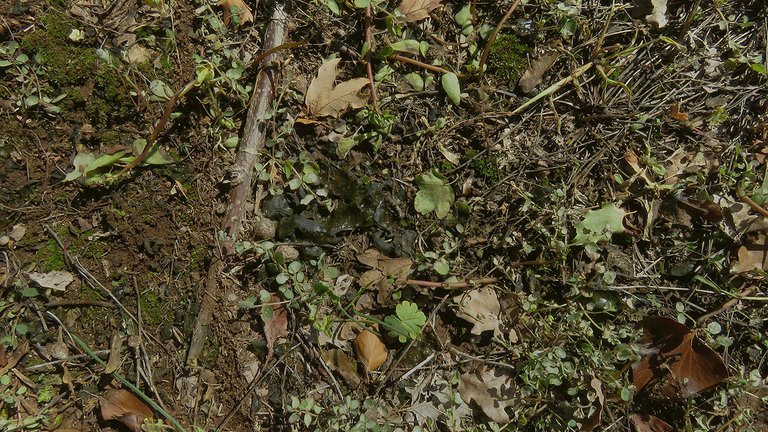
... so I left that patch of terrain and went searching for something else.
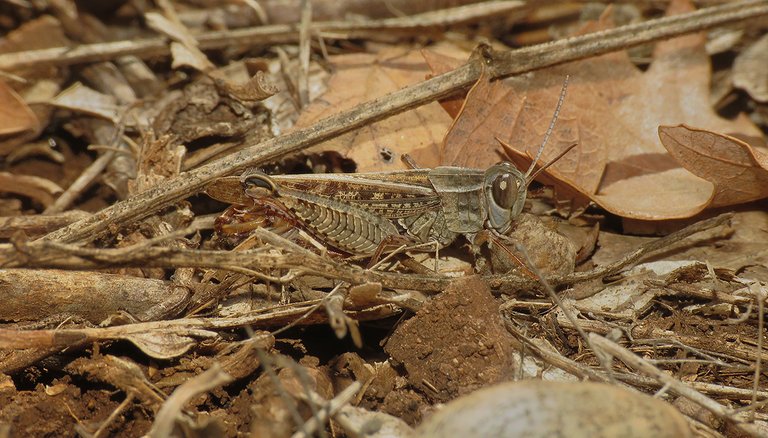
Here you can take a look at another well-camouflaged, barely visible grasshopper from the Acrididae family.
The name of this species is Calliptamus italicus.
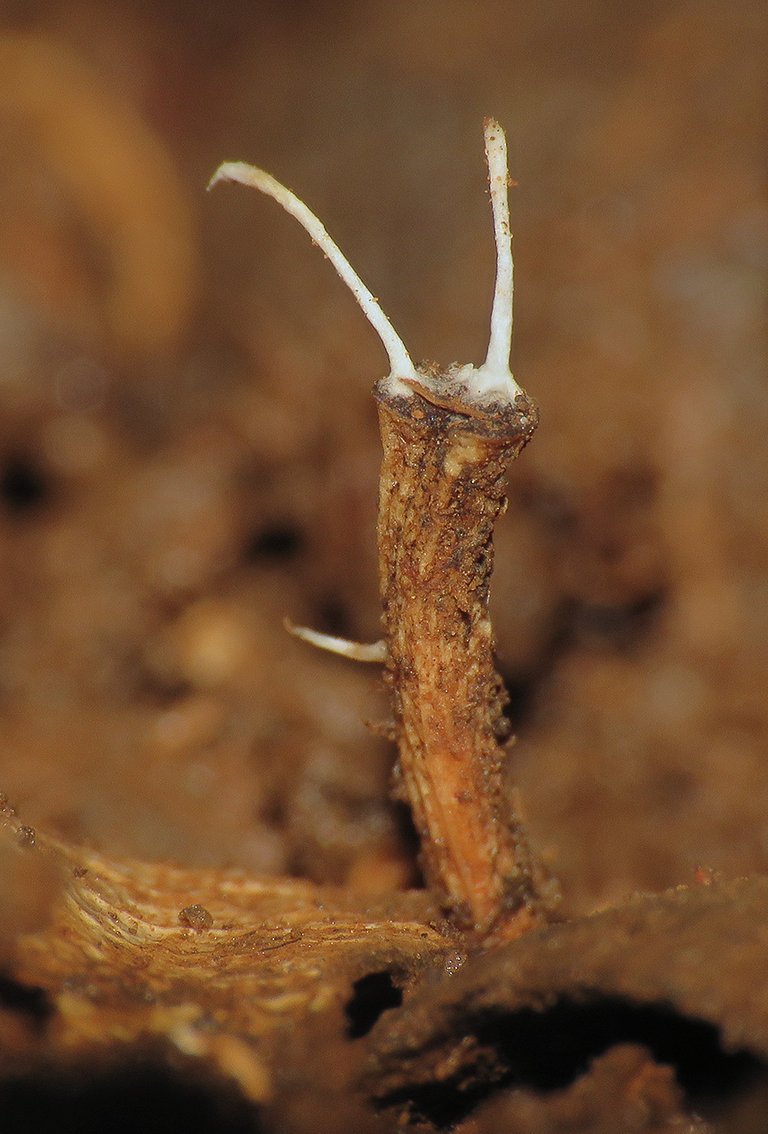
I don't know what is this exactly, but it looks like some kind of fungal growth.
Do you remember the Phlegra bresnieri? The small jumping spider introduced at the beginning of the post? On the 18th of September, I found another one of those. Or maybe it was the same spider. Like, the same individual. I don't know. Anyhow ...
... just like two days earlier, the spider entered one of the many acorn caps scattered on the ground under the tree and stayed there for a couple of minutes.

Some minutes later I found and photographed a group of Crematogaster auberti workers.
These ants from the Formicidae family are very, very small.
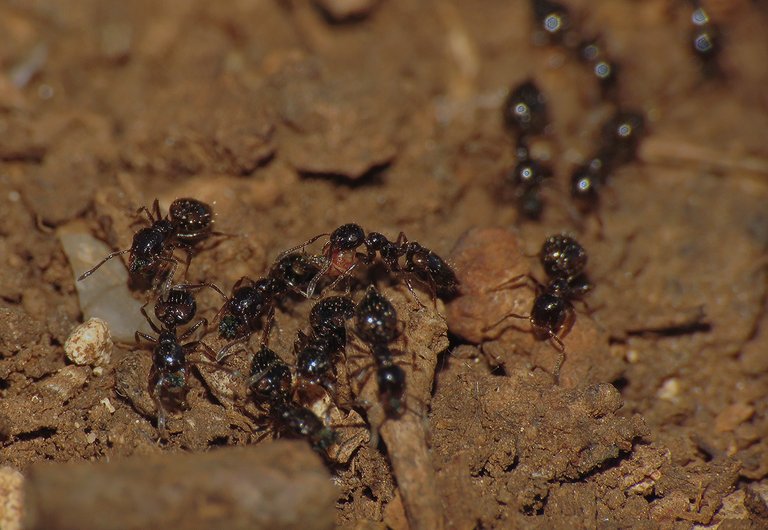
One of the ants in the central-right part of this shot is transporting something.
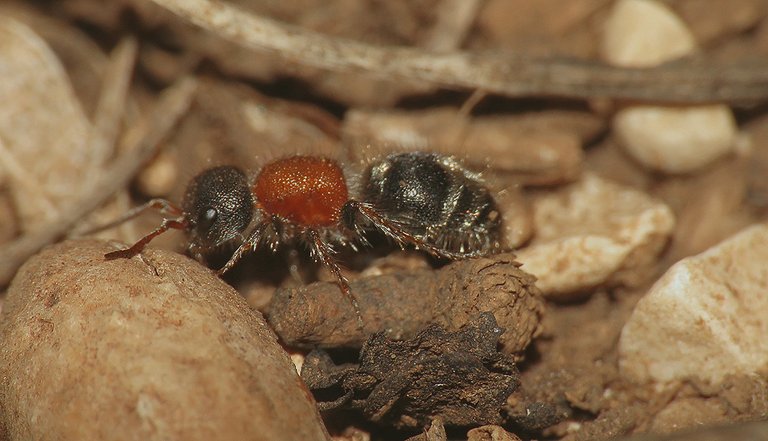
The insect shown in this and the following three photographs is commonly known as a velvet ant.
Despite its common name, this isn't actually an ant. It's a wasp. A wingless female of the Mutilla europaea. Males have wings and look more like one imagines a wasp would look. In the following photograph ...
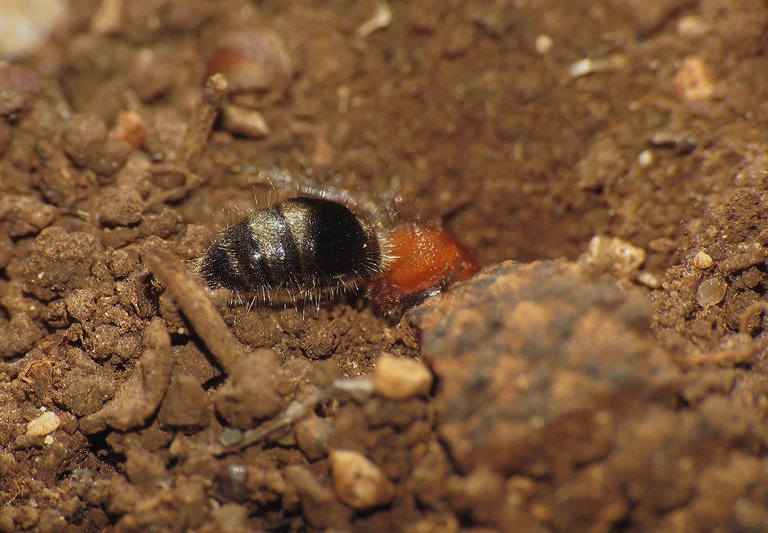
... the velvet ant is digging a hole.

While I was busy photographing all that macro stuff under the oak tree ...
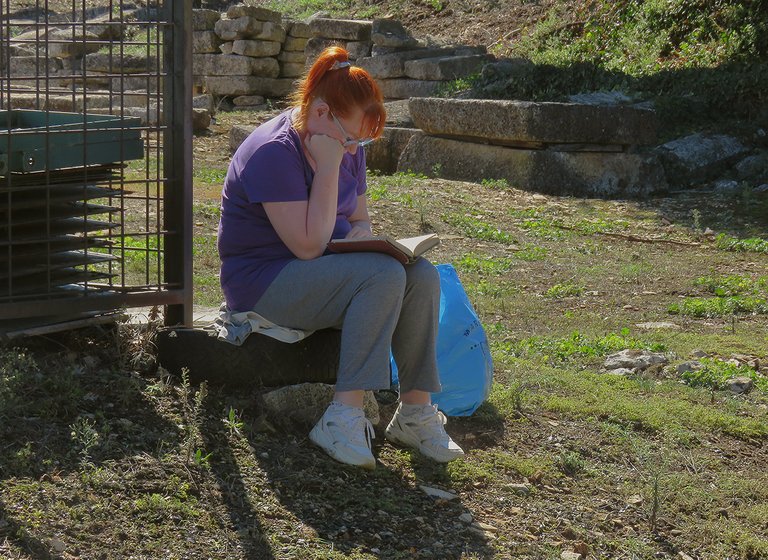
... a friend was reading a book not far from there.

At one point, she noticed an interesting mantis on the ground near her shoes ...
... so she called me and I came closer to take a look and, if possible, identify the insect.
This is the Empusa pennata.
A young, wingless nymph.
When my friend put her hand down on the ground, near the mantis, the mantis climbed it. In this photograph, you can the Empusa pennata posing on the palm of her hand.
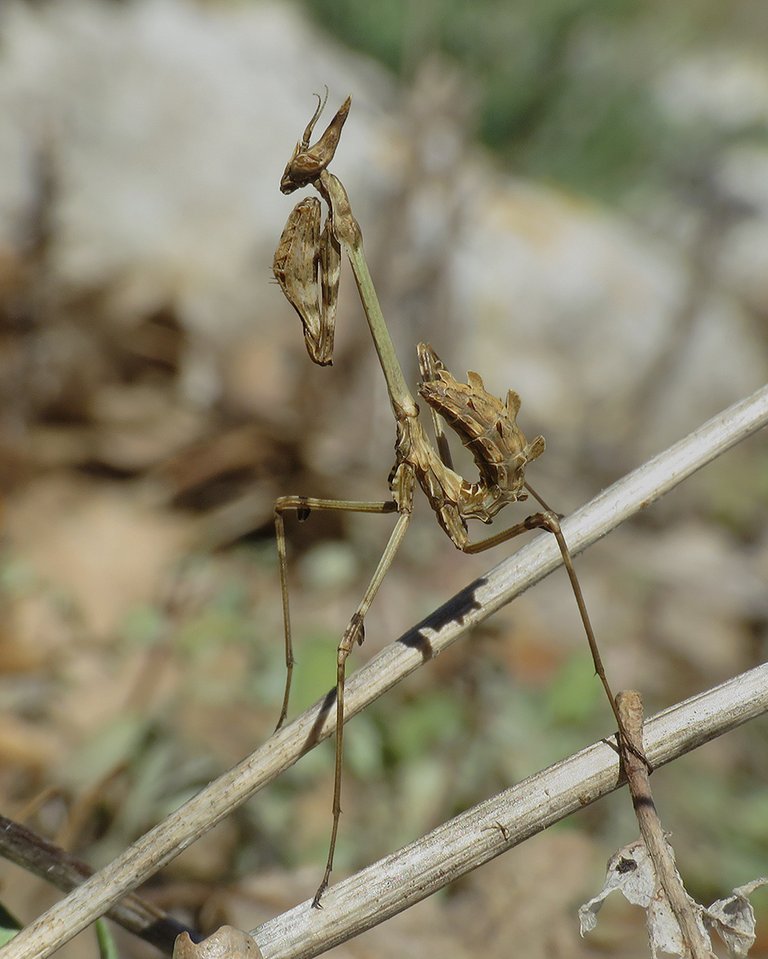
Most insects I presented in this post so far were well-camouflaged in their environment. In that sense, Empusa pennata isn't an exception.
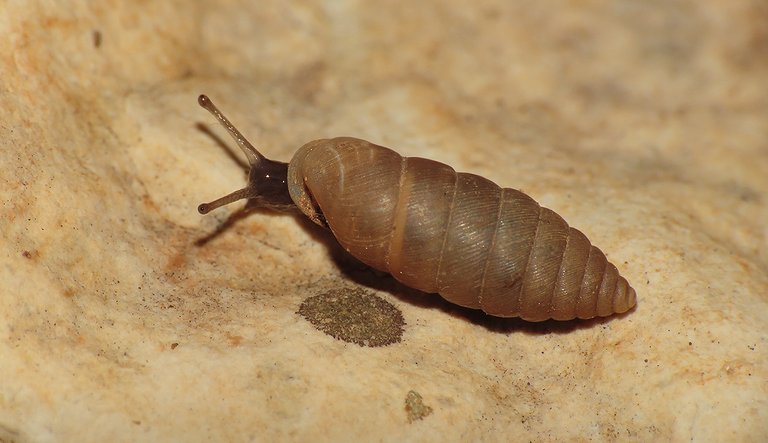
This is the Granaria frumentum illyrica ...
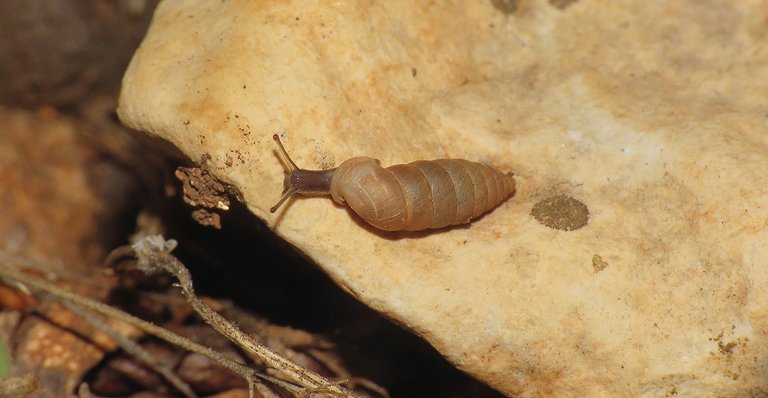
... a lovely little snail from the Chondrinidae family.
I found it under one of the many stones scattered across the archeological park.
In this wide shot, you can take another short break from the macro view and see the excavated remains of the ancient city of Nesactium.
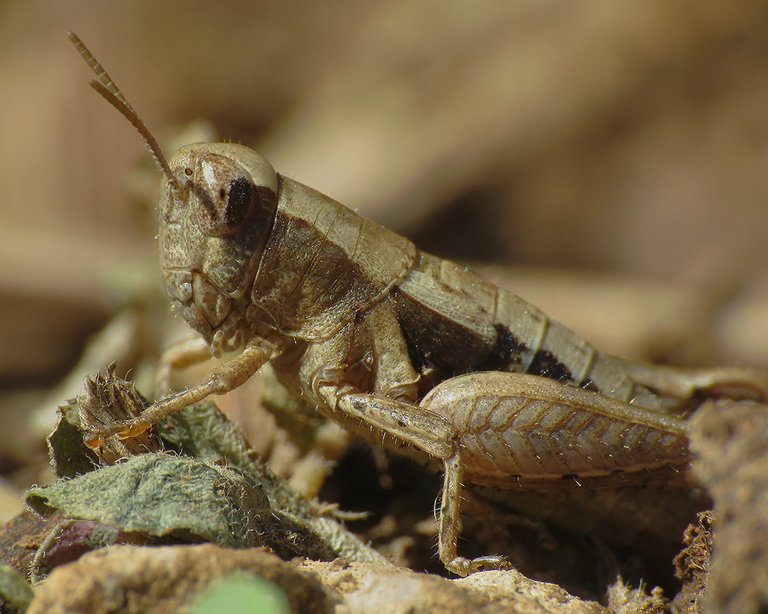
This is the Pezotettix giornae ...
... yet another well-camouflaged grasshopper from the Acrididae family. In the following photograph ...
... the grasshopper is chewing a small fragment of green vegetation surrounded by brown dry stuff.
In this species with very short, oval wings the adults look very much like nymphs, so I'm not sure at what stage of its life the grasshopper shown in this and the previous three photographs is. In the following shot ...
... the Pezotettix giornae grasshoppers are mating, so I can confidently say that these are adults.
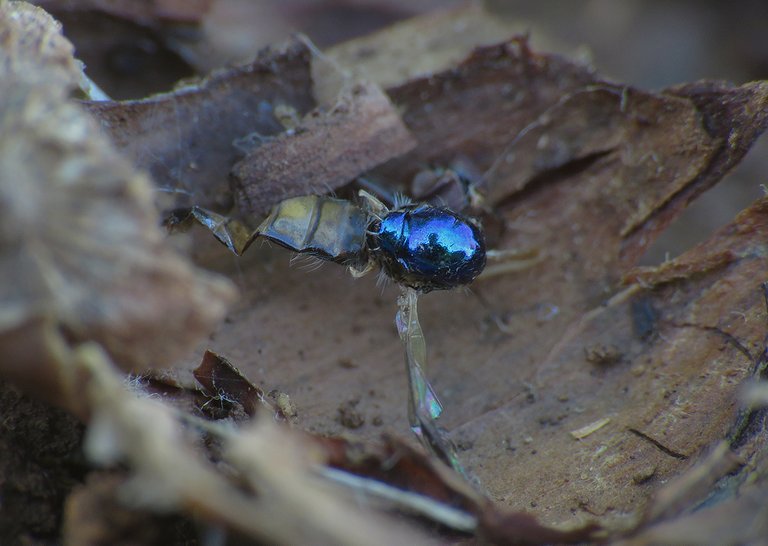
The shiny bluer gem in the center of this photograph is the thorax of the dead hoverfly (Syrphidae family) probably caught and drained by a spider. Some kind of non-web-spinning spider, I would say.
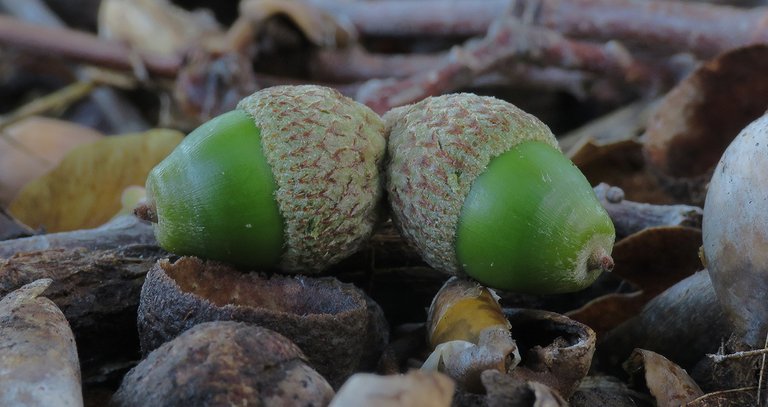
Here you can see two lovely green acorns posing in front of the macro lens of my camera. In the following photograph ...
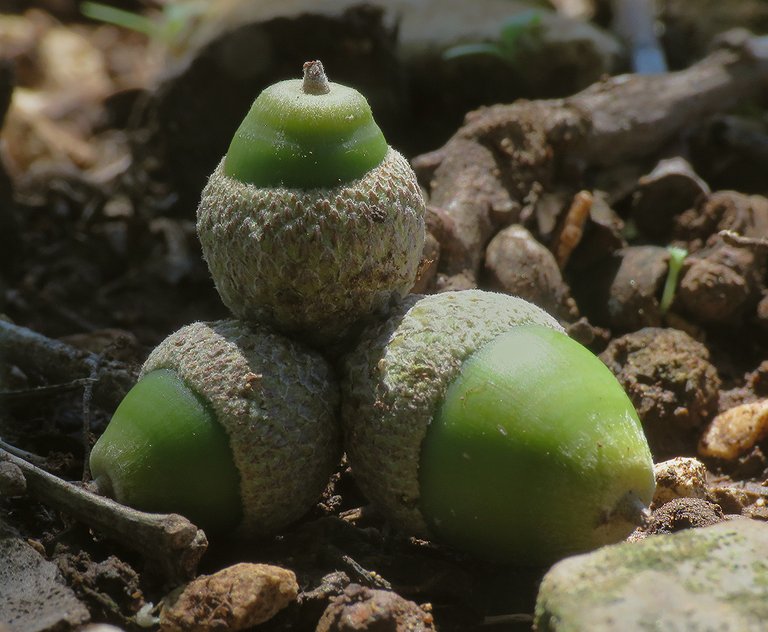
... the acorns are three. And that's it. I have no more pics to show.
The following links will take you to the sites with more information about some of the protagonists of this post. I found some stuff about them there.
https://en.wikipedia.org/wiki/Phlegra_bresnieri
https://en.wikipedia.org/wiki/Oedipoda_caerulescens
https://en.wikipedia.org/wiki/Quercus_pubescens
https://www.antwiki.org/wiki/Tetramorium
https://en.wikipedia.org/wiki/Adia_cinerella
https://www.inaturalist.org/taxa/326618-Helina/browse_photos
https://en.wikipedia.org/wiki/Vespula_germanica
https://en.wikipedia.org/wiki/Darkling_beetle
https://en.wikipedia.org/wiki/Loboptera
https://en.wikipedia.org/wiki/Crinipellis_zonata
https://en.wikipedia.org/wiki/Metcalfa_pruinosa
https://en.wikipedia.org/wiki/Nostoc_commune
https://en.wikipedia.org/wiki/Pardosa_amentata
https://en.wikipedia.org/wiki/Calliptamus_italicus
https://www.estheticants.com/product-page/crematogaster-auberti
https://en.wikipedia.org/wiki/Mutilla_europaea
https://en.wikipedia.org/wiki/Empusa_pennata
https://conchsoc.org/MolluscWorld23/4
http://www.pyrgus.de/Pezotettix_giornae_en.html
If you like to learn more about the city of Nesactium, you can take a look at one of my old posts about it. The following link can take you there.
https://ecency.com/hive-163772/@borjan/summer-on-the-ancient-walls
AS ALWAYS HERE ON HIVE, THE PHOTOGRAPHS ARE MY WORK.
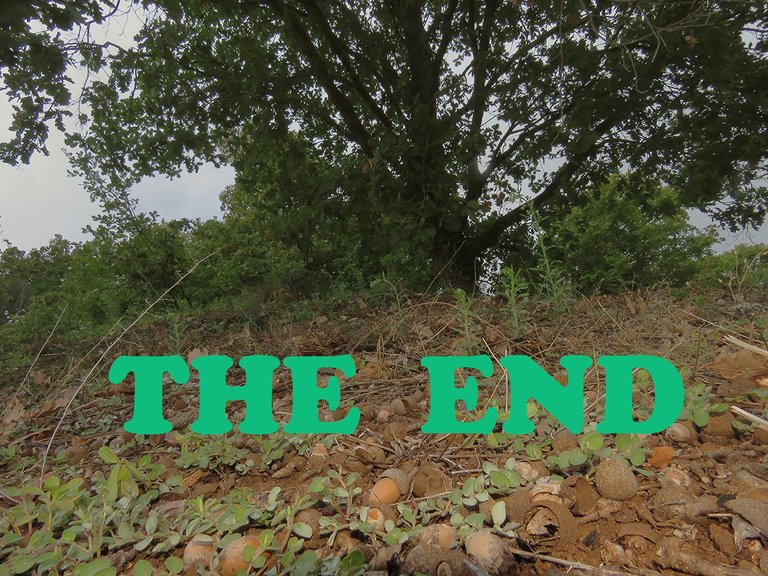
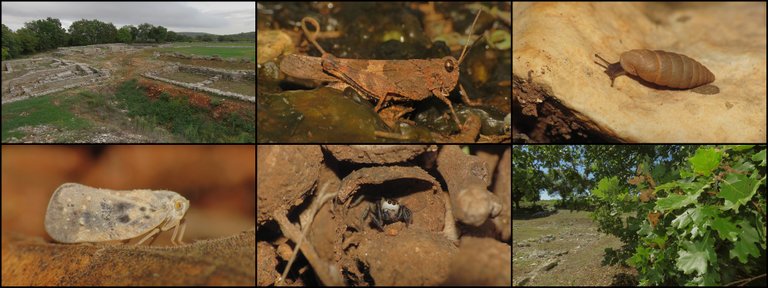
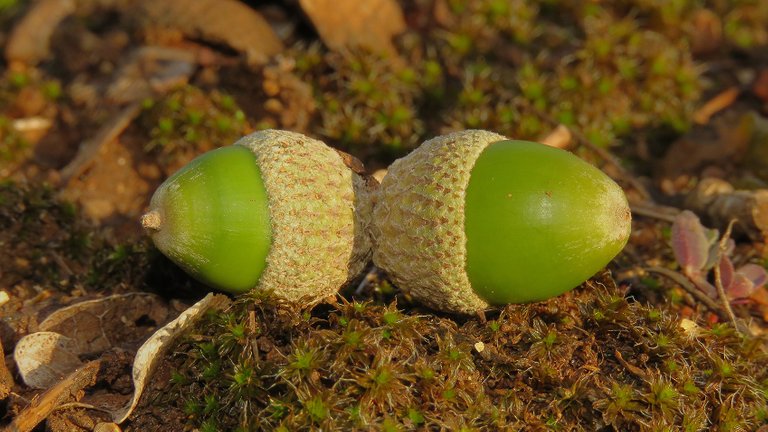

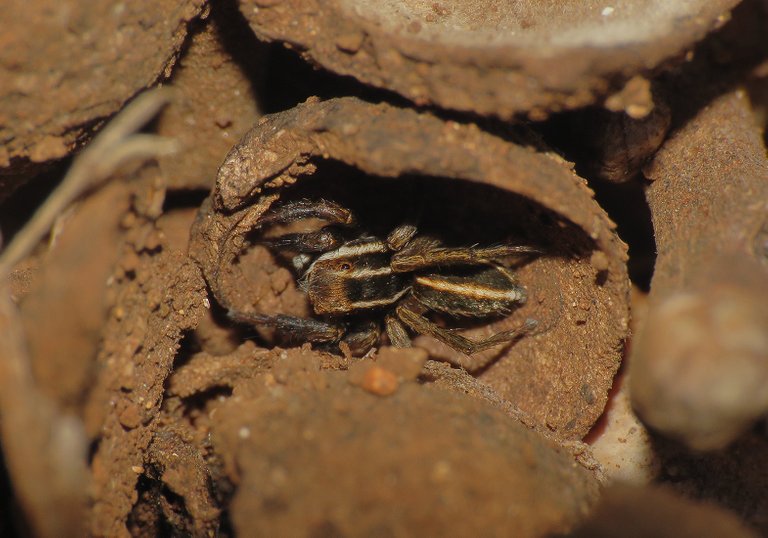

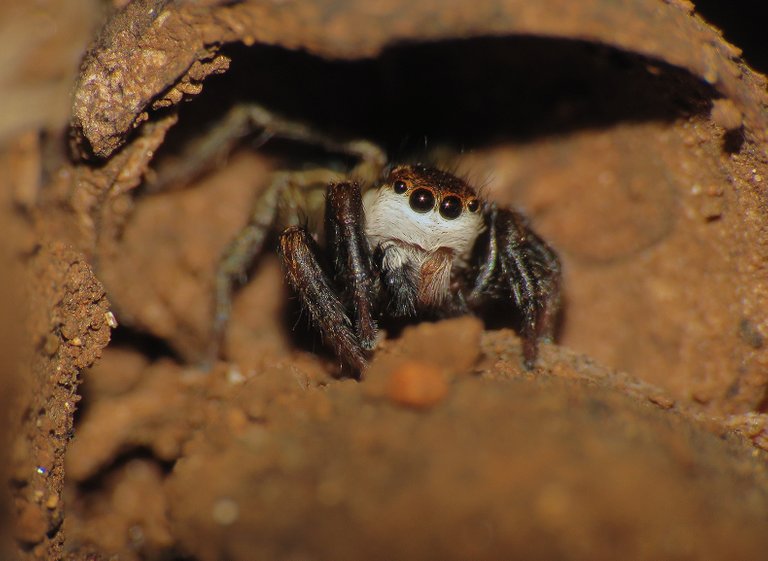
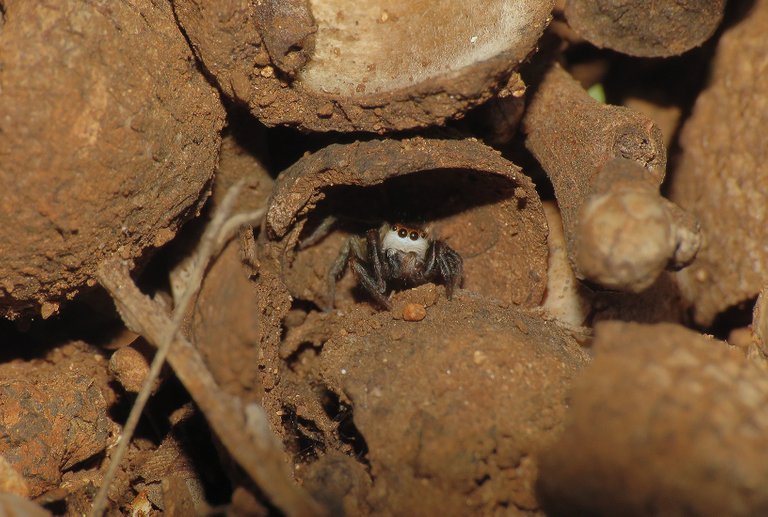

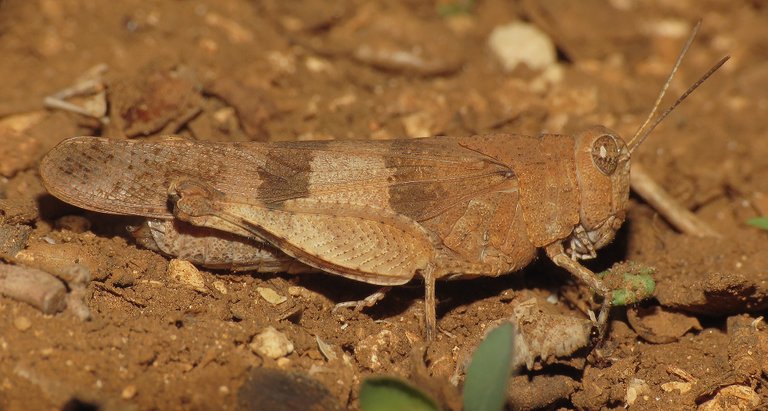

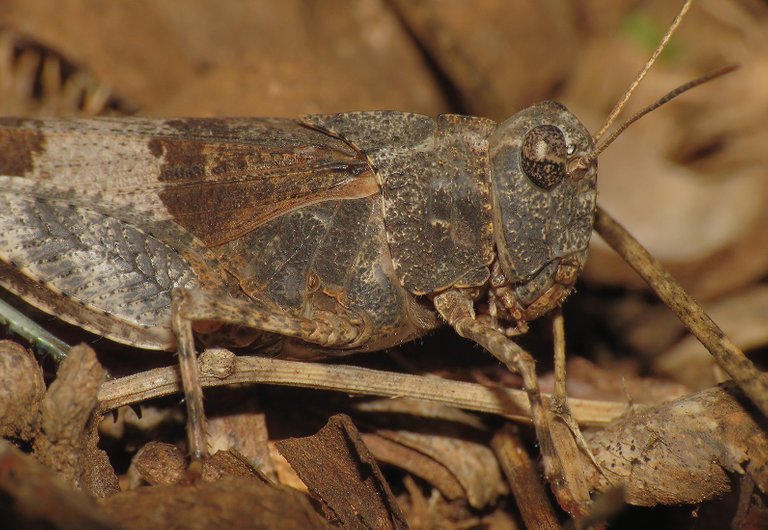
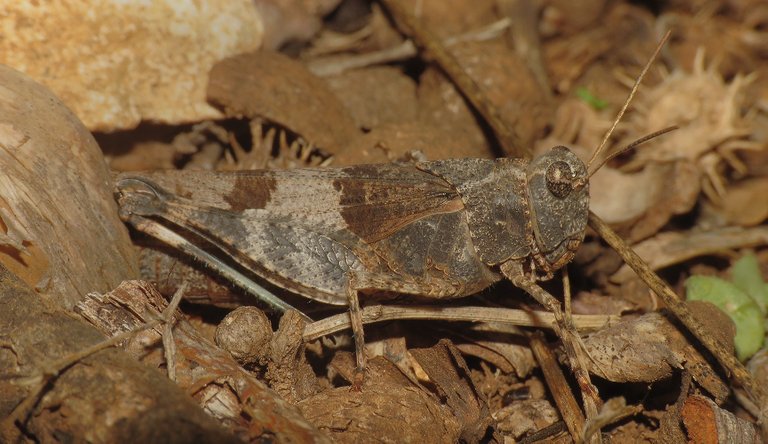
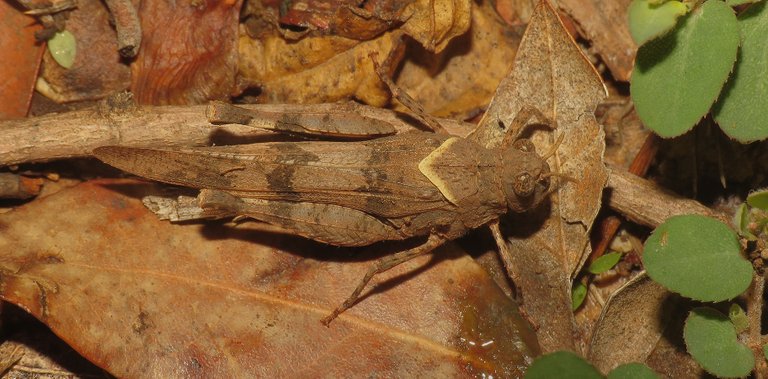

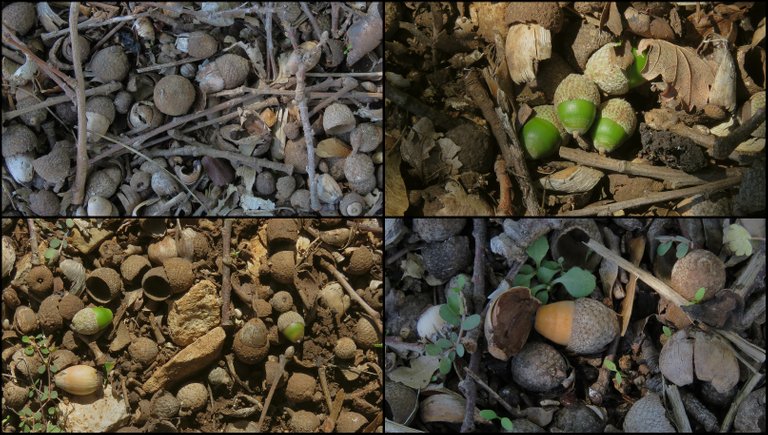
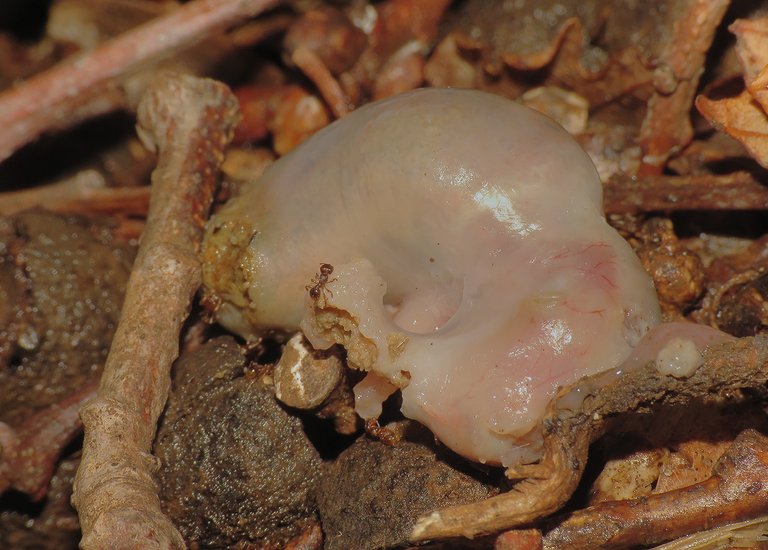
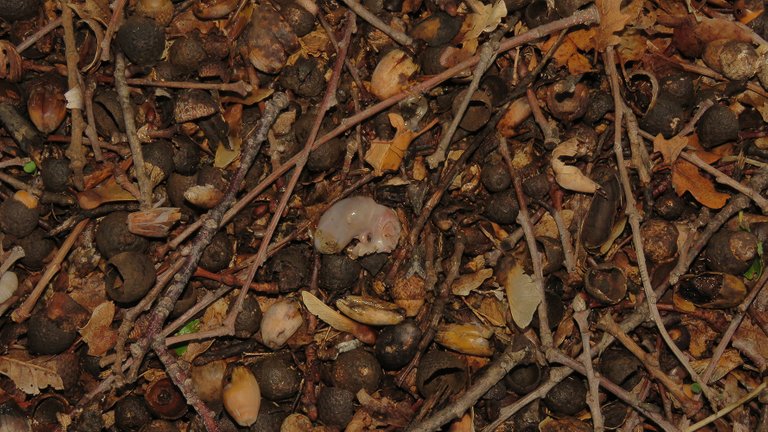
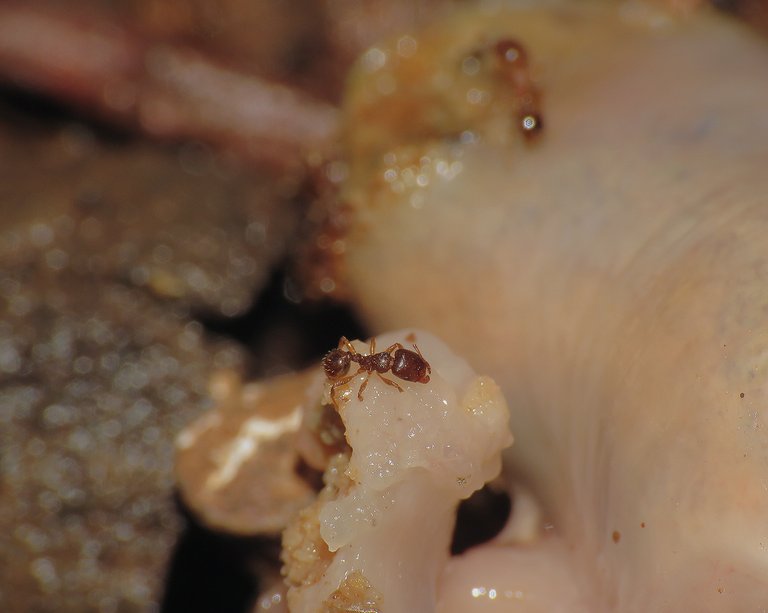

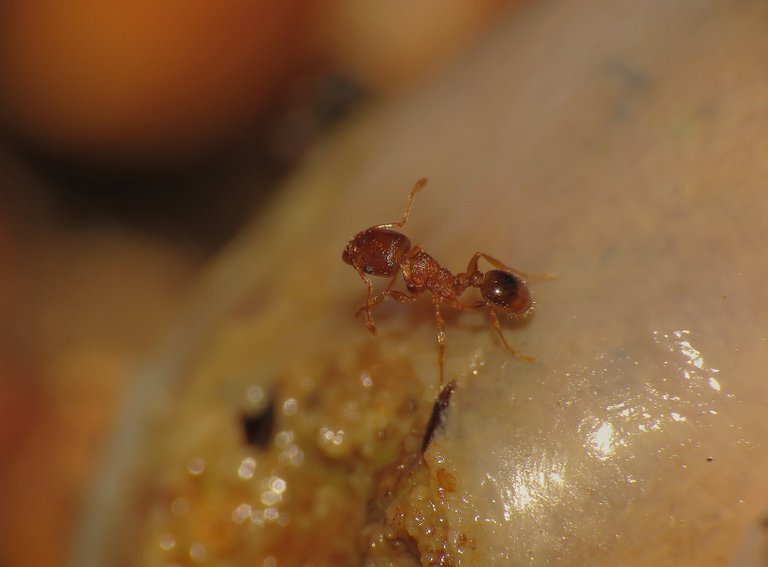
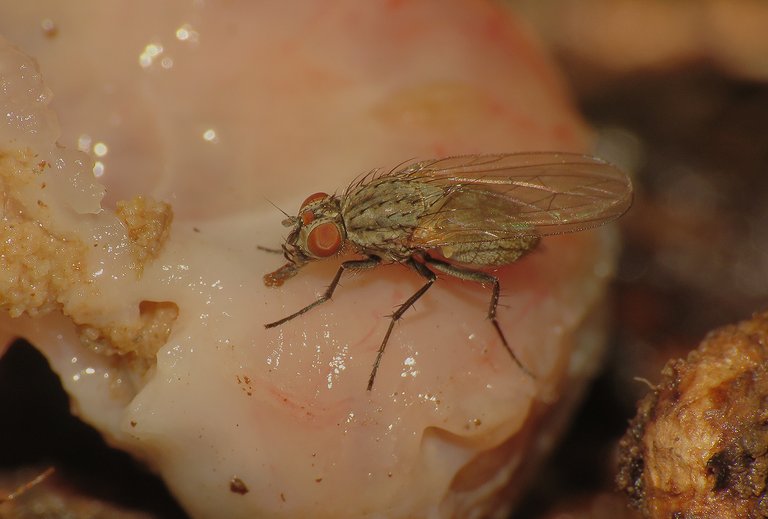

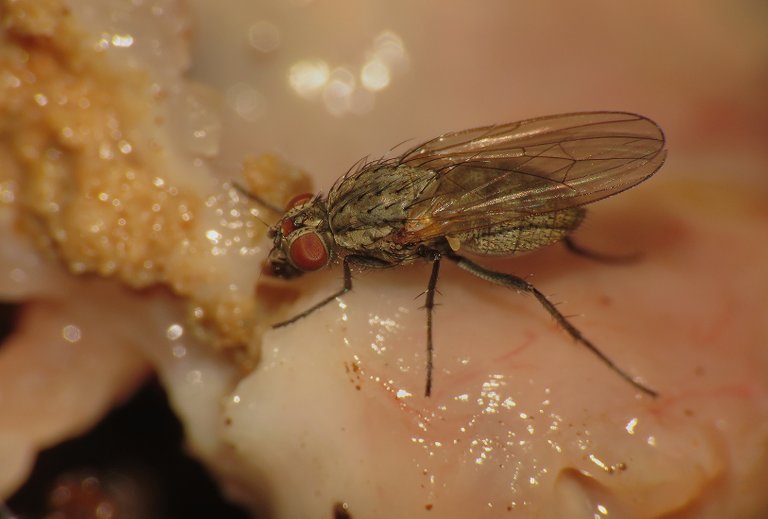
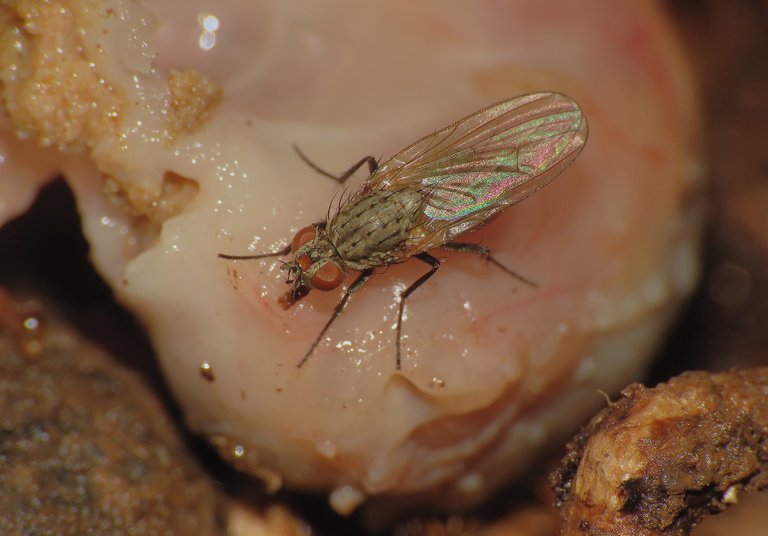



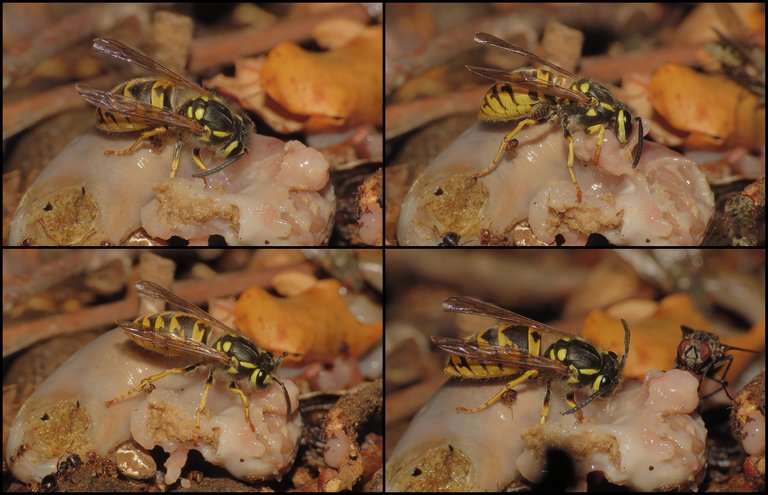
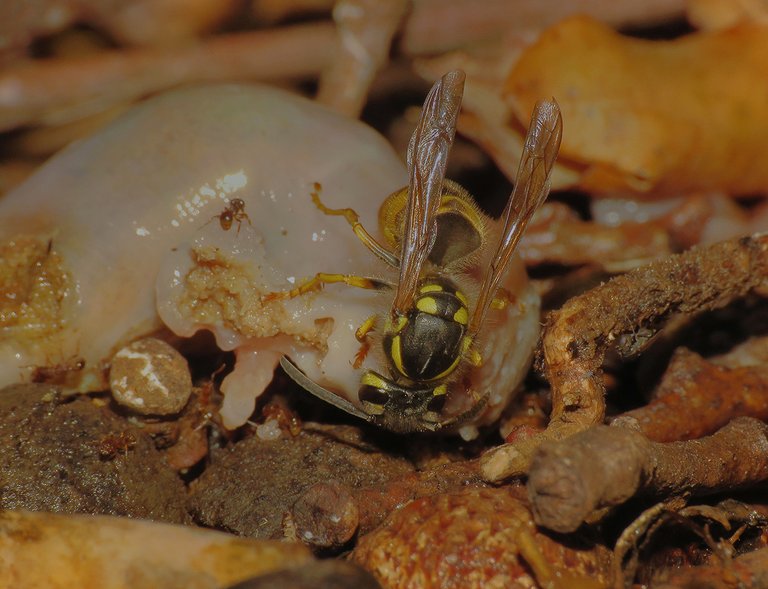

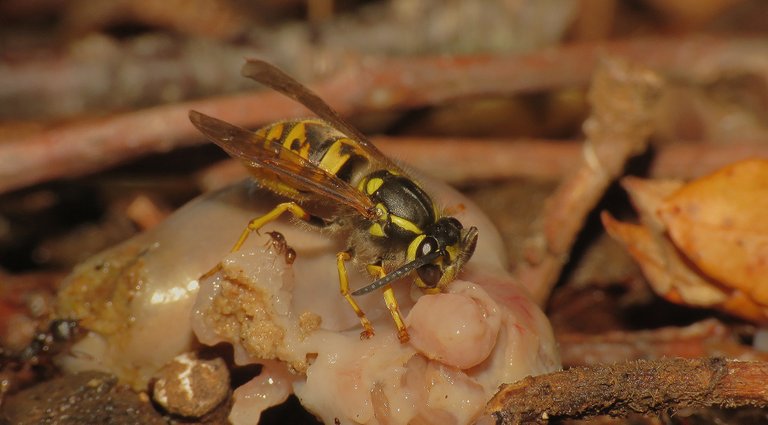
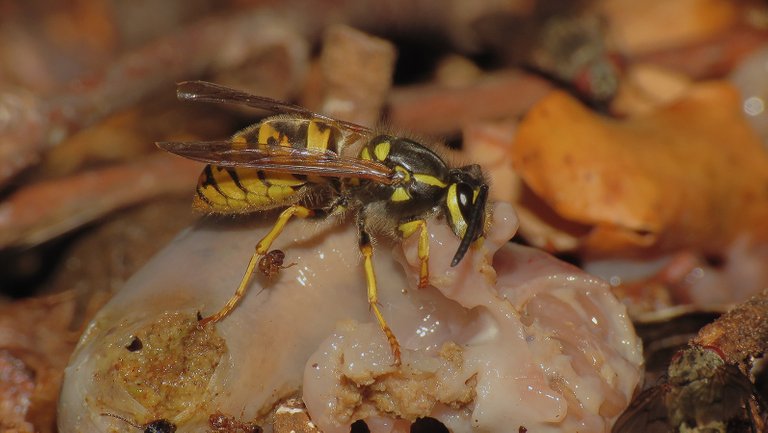
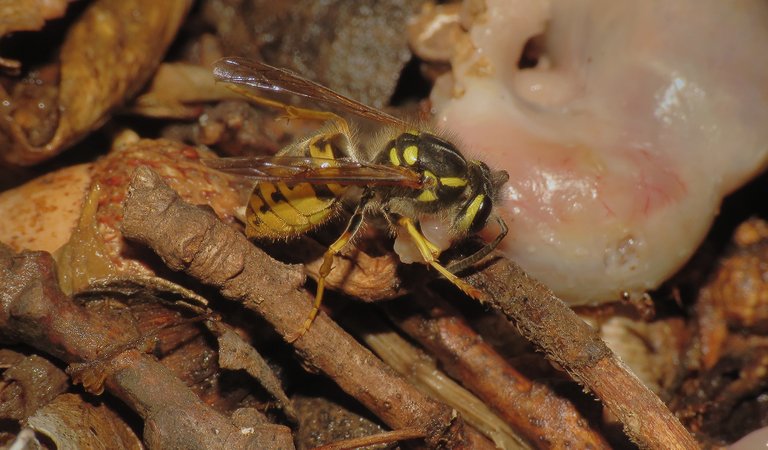


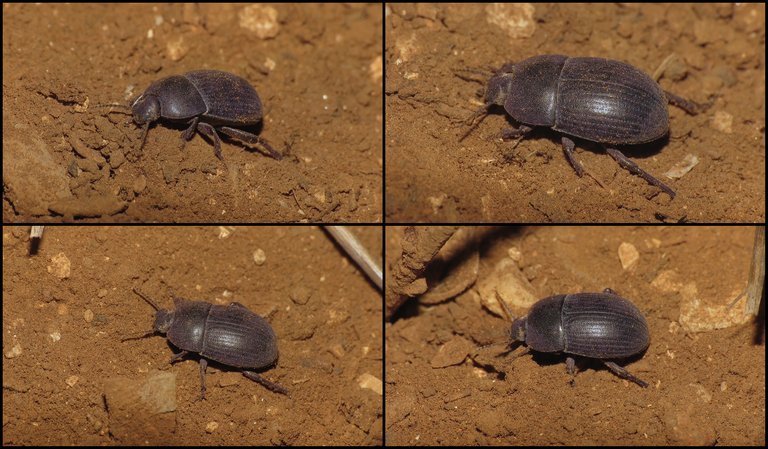
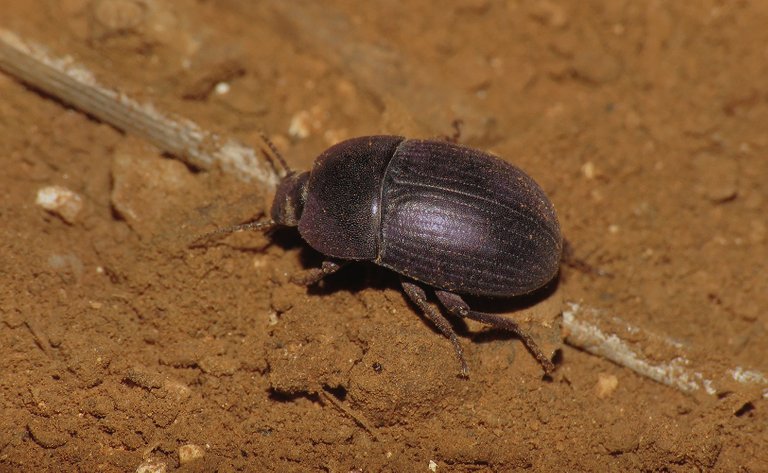
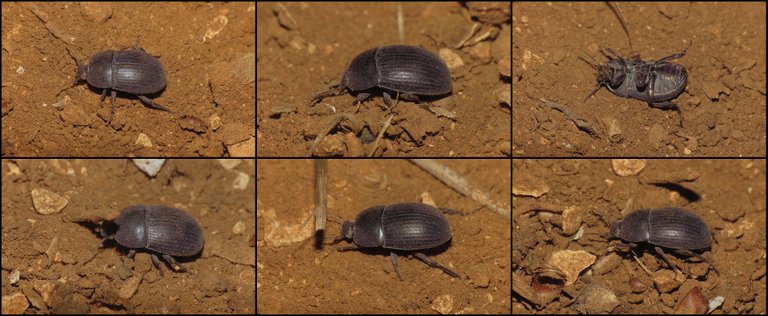

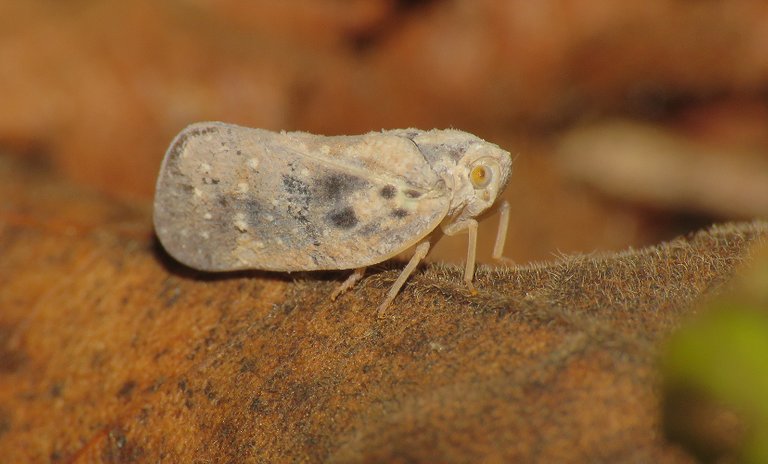
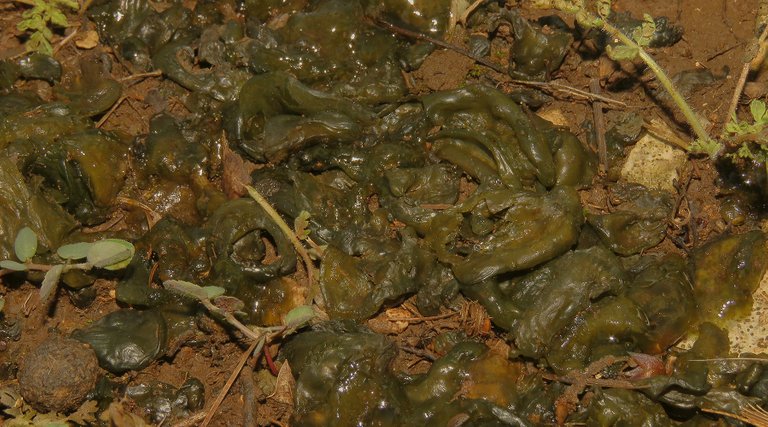
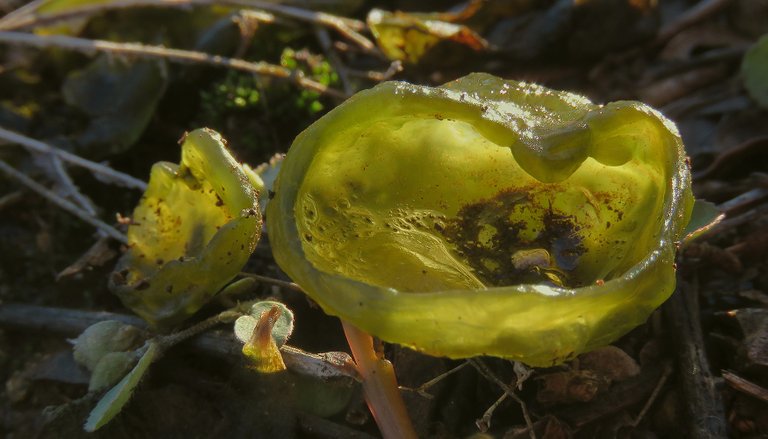
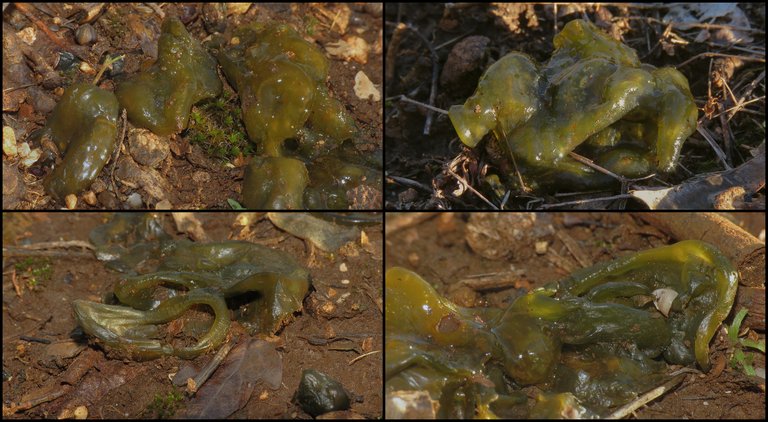
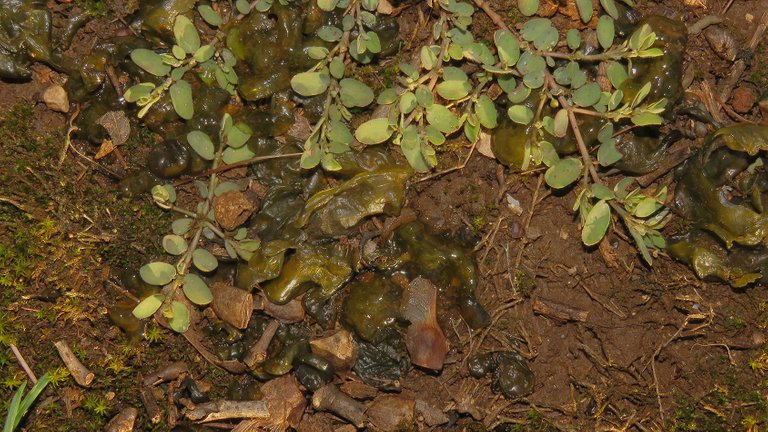
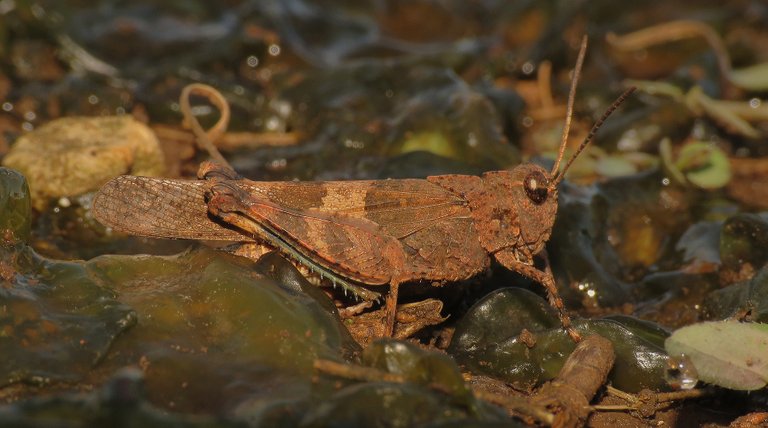
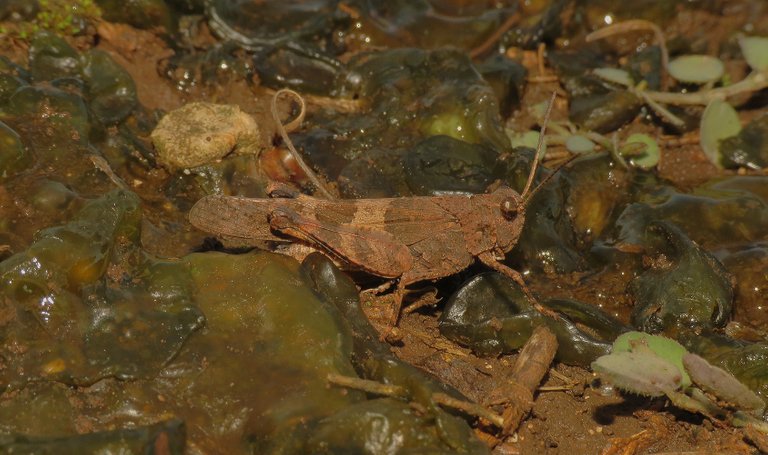
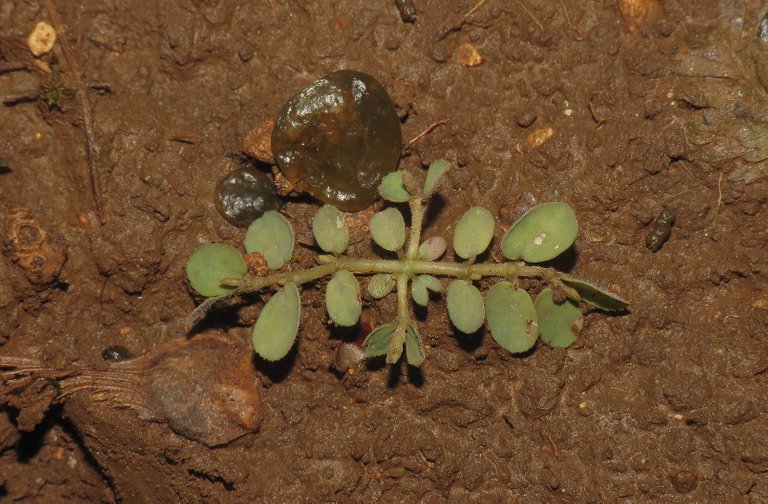

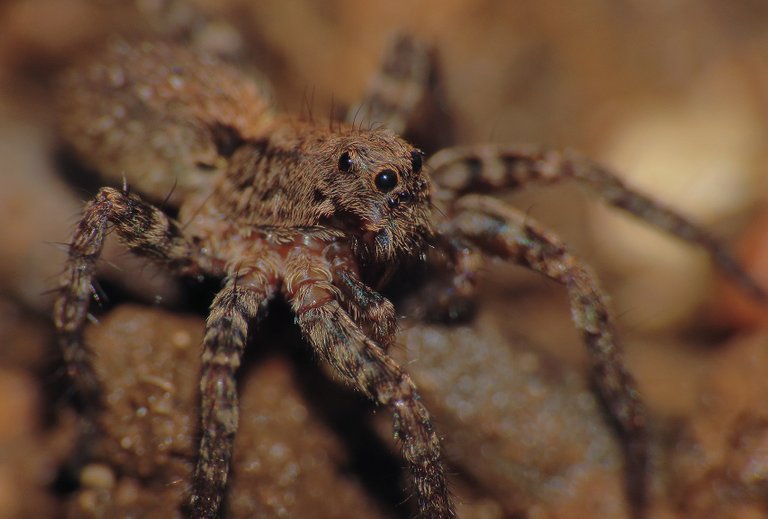


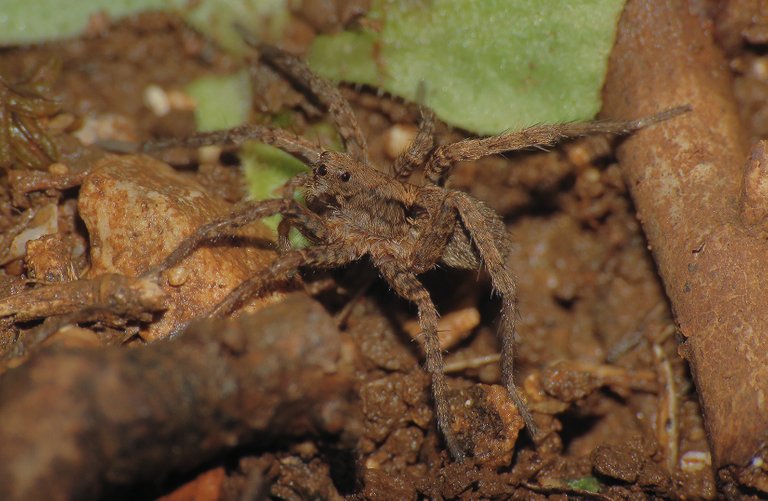

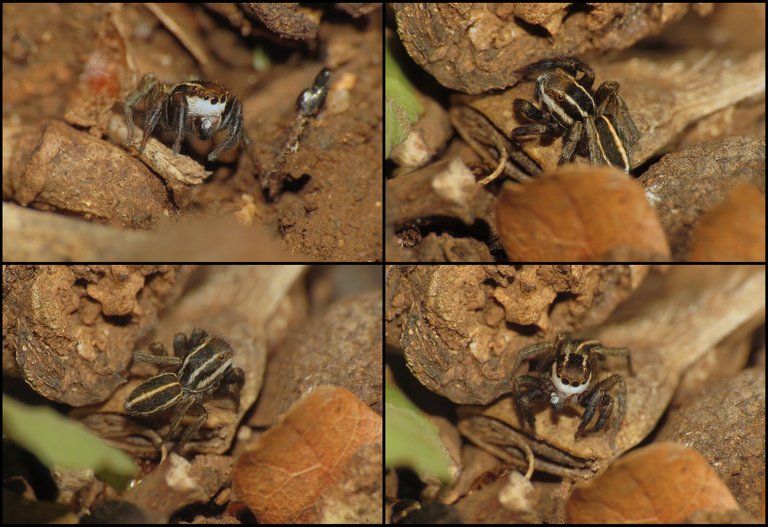
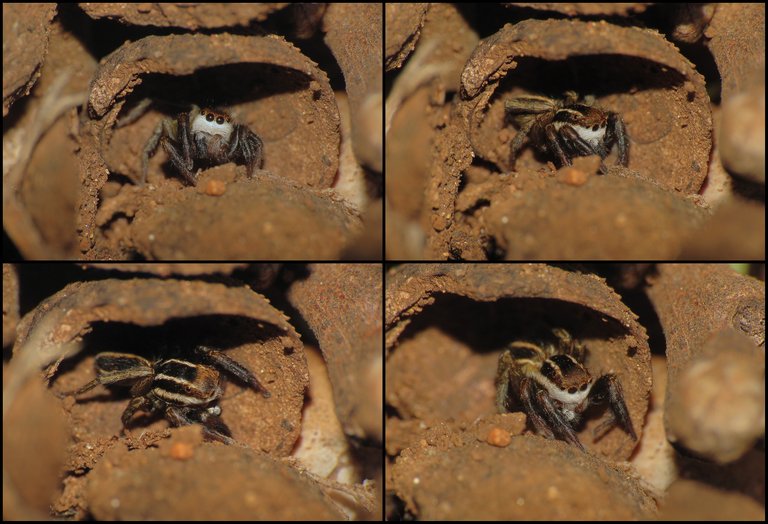
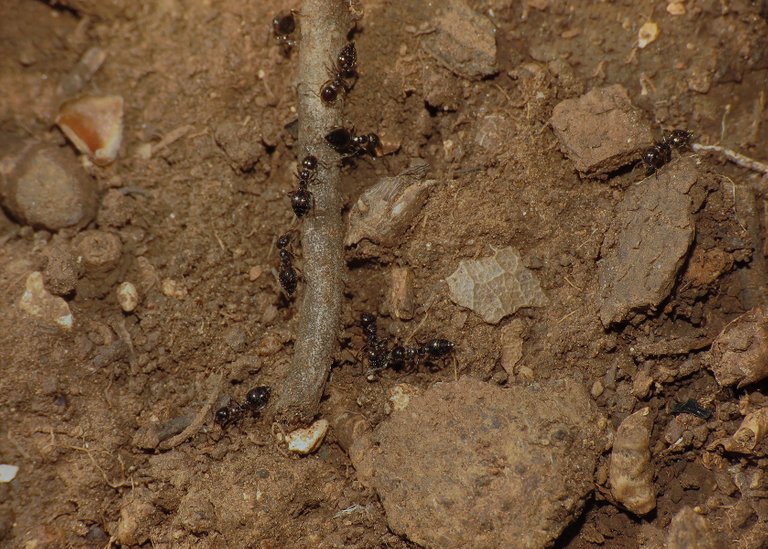


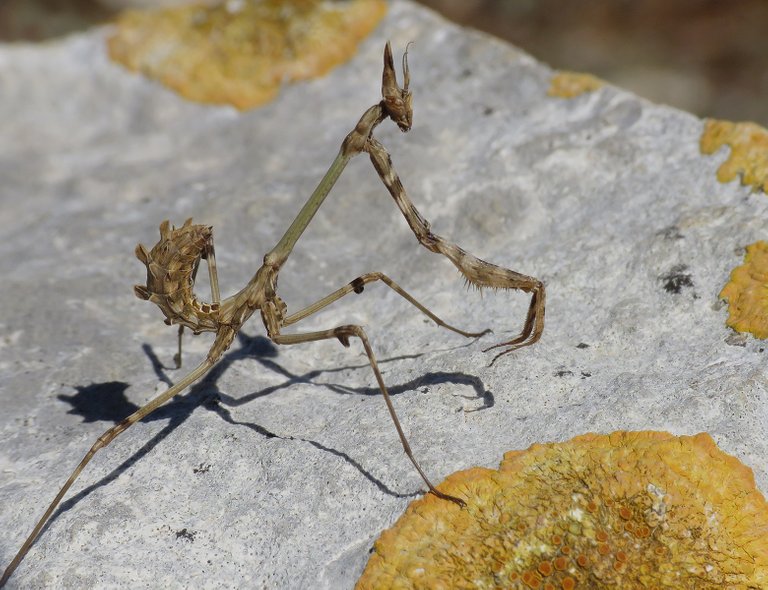

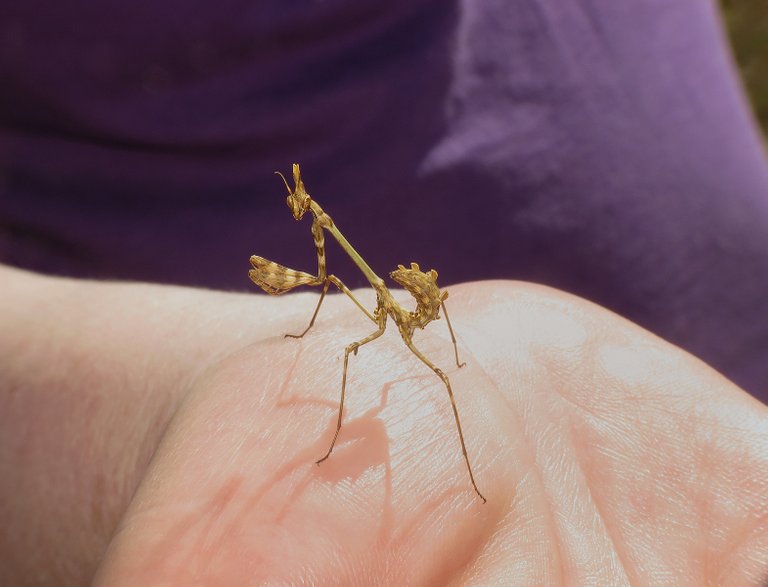
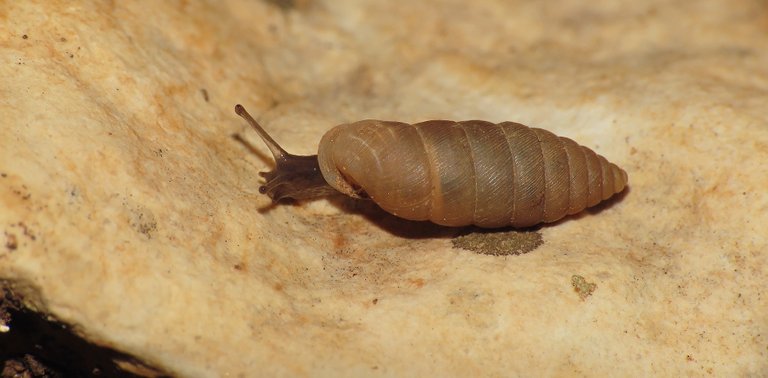
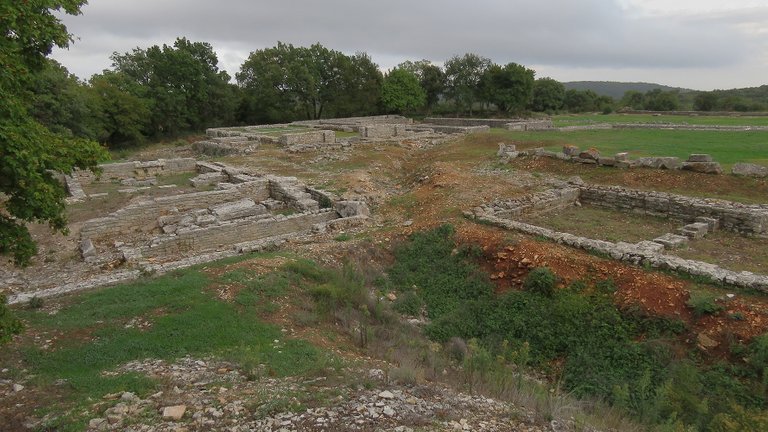
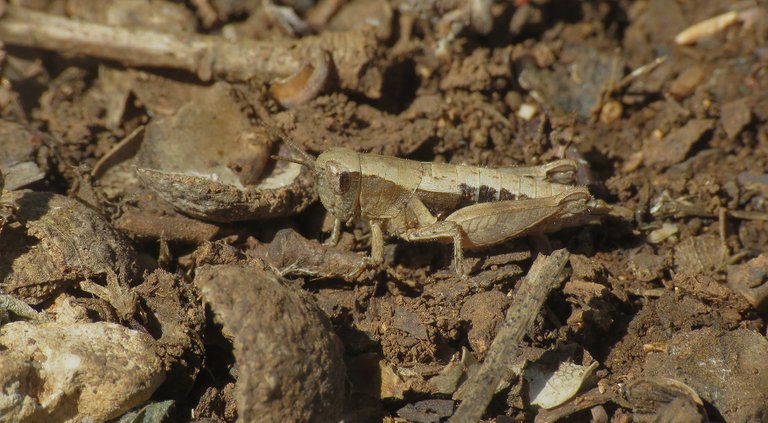
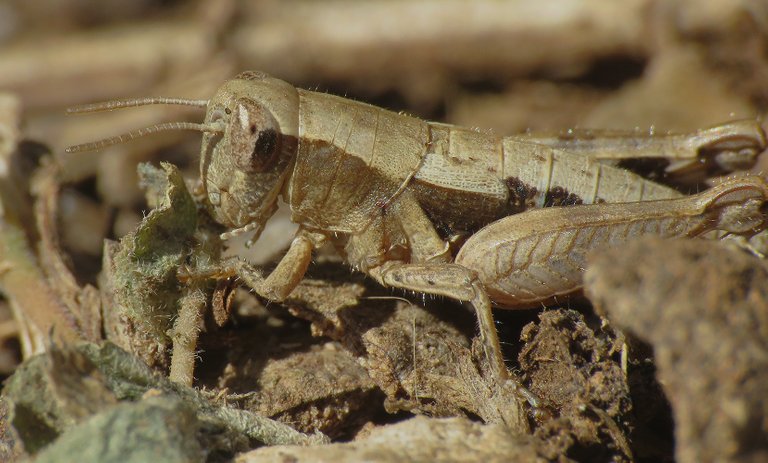
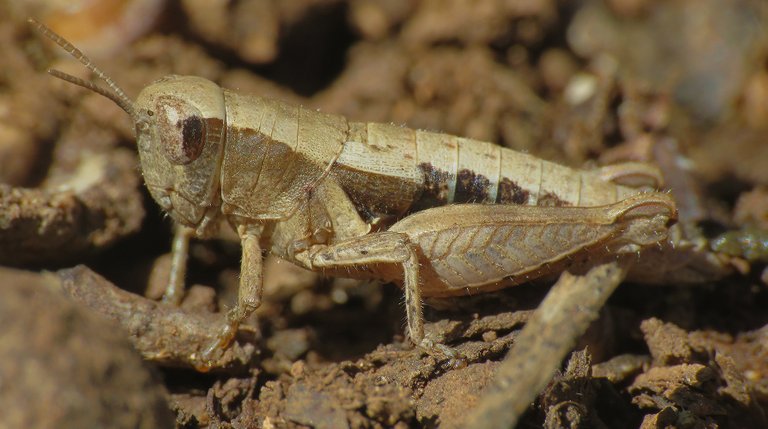

@tipu curate :)
Upvoted 👌 (Mana: 50/60) Liquid rewards.
Thanks for your contribution to the STEMsocial community. Feel free to join us on discord to get to know the rest of us!
Please consider delegating to the @stemsocial account (85% of the curation rewards are returned).
You may also include @stemsocial as a beneficiary of the rewards of this post to get a stronger support.
It looks like a fungal hypha. Perhaps Neurospora Crassa. The underlying cells that make up the fungal hypha are actually extremely elongated very different from ordinary cells which are more like tiny bricks or balloons. Which hopefully is a fact that now rent free lives in your head.
Great! 🙂 Thanks for the info.
Well m'dear, you've photographed some stomach-churning stuff in your time but this has to take the biscuit!
I think I'll have to go lie down now🙃
😄
When autumn heralds its arrival amidst the late summer tones ... gorgeous!
Oh no, seems the spider was enjoying as it poses well on the camera lens! And you had good skills in photography, you captured all the photos well. Seeing these tiny insects in bigger versions, thru photos.
I am curious, do you add it in some sites ,.like pexels?
No me queda otra cosa que decir impresionante la foto de la pequeña araña, posa, incluso luce graciosa te observa y hasta sonríe para ti.
El saltamontes también luce espectacular al desaparecer a la vista de los depredadores utilizan un camuflaje natural hermoso insecto, en si los insectos me agradan y me siento cómodo observarlos.
@borjan
You captured high quality and storytelling pictures.
Thank you. 🙂 Glad you like the post.
Welcome. 🙂
You find some amazing stuff. Loving the mantis as usual - they look other-worldly !
!LUV
(4/5) sent you LUV. | discord | community | HiveWiki | NFT | <>< daily@borjan, @hoosie
! help(no space) to get help on Hive. InfoYou have such microscopic eyes to catch those stuff.
Sometimes it's good to go back to where you've been before :)
!ALIVE
You Are Alive so I just staked 0.1 $ALIVE(8/10)@borjan! to your account on behalf of @roninrelax.
The tip has been paid for by the We Are Alive Tribe
 through the earnings on @alive.chat, feel free to swing by our daily chat any time you want, plus you can win Hive Power and Alive Power delegations and Ecency Points in our chat every day.
through the earnings on @alive.chat, feel free to swing by our daily chat any time you want, plus you can win Hive Power and Alive Power delegations and Ecency Points in our chat every day.
Dammm.....a lot of beauty insects.
I am big fan of your original content. All these pictures looks so beautiful and amazing.
I had to zoom the pictures of the insects
I have never seen their kinds before...
Amazing what you can see when you look closely, wonderful Nature shots as always on your photo posts! !PIZZA !LOLZ !HUG 👌
I sent 1.0 HUG
(2/3)Dear @borjan, you just got hugged. on behalf of @fun.farms.
lolztoken.com
It’s not like you’re getting any younger
Credit: reddit
$LOLZ
(3/10)
ENTER @WIN.HIVE'S DAILY DRAW AND WIN HIVE!@borjan, I sent you an on behalf of @fun.farms
You've done some amazing macro photography of insects that turned out great. Also you have photographed some insects that I don't think I have seen before. Also you have done some amazing nature photography which is truly amazing.
Cool). Insects disguise themselves very well.
Great pictures here. You never disappoint
The spider looks very tough its eyes are very clear
#hive #posh
All the pictures that I show are really quite beautiful and I really like the insects that have been shown.
I don't like insects, beetles, wasps etc. I am not much friendly towards them.
You capture pictures beautifully as always.
$PIZZA slices delivered:
(4/5) @fun.farms tipped @borjan